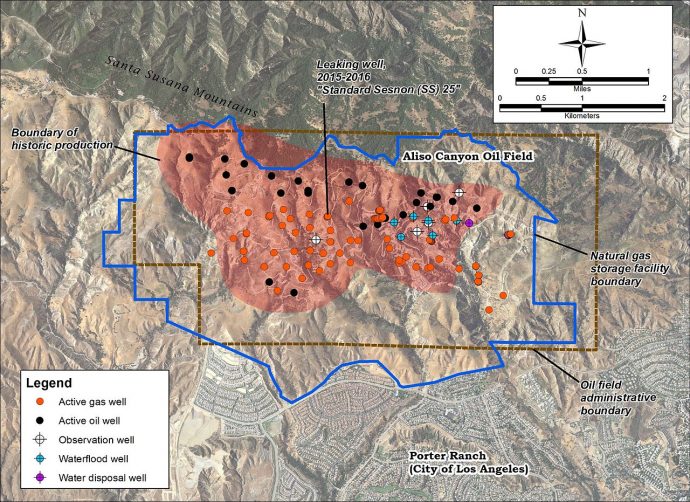In October 2015, the blowout of a wellhead connected to a vast underground storage system for natural gas near the Porter Ranch community in northeastern Los Angeles led to the evacuation of approximately 1700 homes and two schools. Seven attempts were made to stop the flow before the well was finally sealed with cement on February 2016. This massive leak released approximately 5 billion cubic feet of methane into the atmosphere and now appears to have been the worst accidental discharge of greenhouse gases in the US. In today’s modern society, people are not only at risk of being exposed to gases derived from accidental causes but also exposure due to intentional causes such as terrorist attacks. To help address these concerns scientists have looked into creating more practical and economical means of detecting toxic gas.

Site of the Aliso Canyon/Porter Ranch gas leak by Southern California Gas Co. in October 2015
A joint research group at MIT, supported by the Japan Society for the Promotion of Science, have developed low-cost chemical sensors, made from chemically altered carbon nanotubes (CNTs) that enable wireless devices to detect trace amounts of toxic gases. Carbon nanotubes were chemically modified so that their ability to carry an electric current changes when exposed to a target chemical. The chemical-sensing material consist of a group of CNTs individually wrapped with clusters of monomers that interact to form supramolecular polymers. CNTs are highly conductive materials, but when wrapped with supramolecular polymers, they become poor conductors. The supramolecular polymers were designed so that the molecules dissociate when the weakly bound sites are exposed to toxic gases, causing the wrapping molecules to disassemble. As a result, the original high-conductive state of CNTs is restored. The change in conductivity is directly proportional to the concentration and the duration of exposure to a toxic gas. This electrical signal is readable by smartphones with near-field communication (NFC) technology, which allows devices to transmit data over short distances. The research group demonstrated that when exposed to 10 parts per million of SOCl2 for five seconds, the material’s resistance dropped to a point detectable by a smartphone. Approximately 4 million sensors can be made from 1 gram of the carbon nanotube materials, therefore making it feasible to mass-produce this technology at low cost.
By integrating this technology into a handheld device, people can detect the presence of toxic gases within seconds, allowing them to act quickly to either contain the leak or evacuate. Potential harm can be reduced in people who work around hazardous chemicals prone to leakage as well as soldiers on the battlefield detecting the presence of chemical weapons. Over the years, incidences, such as the evacuation of thousands of people near the Porter Ranch community in October 2015, have increased the need for new innovative technology that can aide in toxic gas detection. In the future, such technological advances will further increase personal safety and security.
Nancy Lopez was born and raised in Los Angeles, California. She graduated from the University of California, Irvine, with a degree in biological sciences with a minor in medical anthropology. She received a Master's in global medicine from the University of Southern California. She has a special interest in rural and public health. In her free time, she enjoys dancing, hiking, snowboarding when the sunny Arizona weather is permitting, and spending time traveling.

